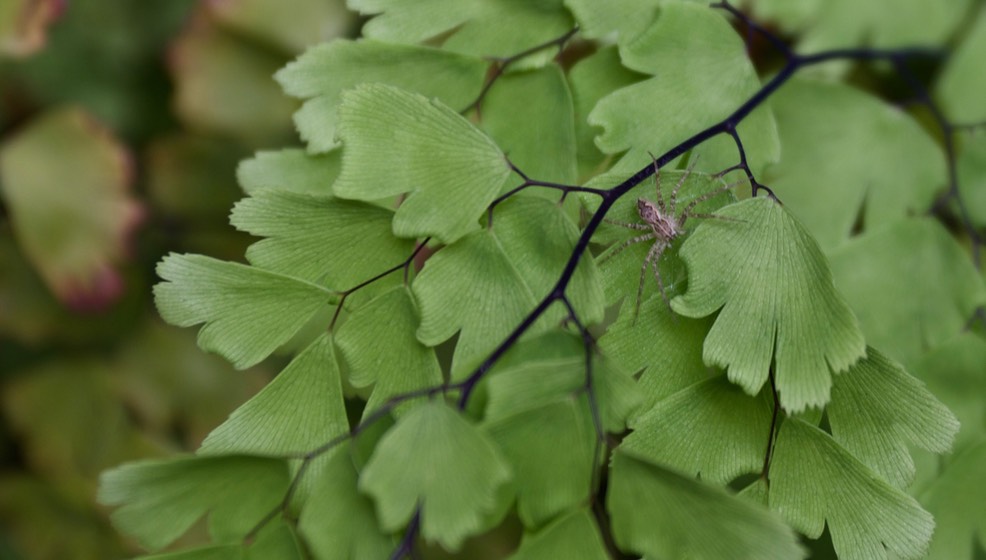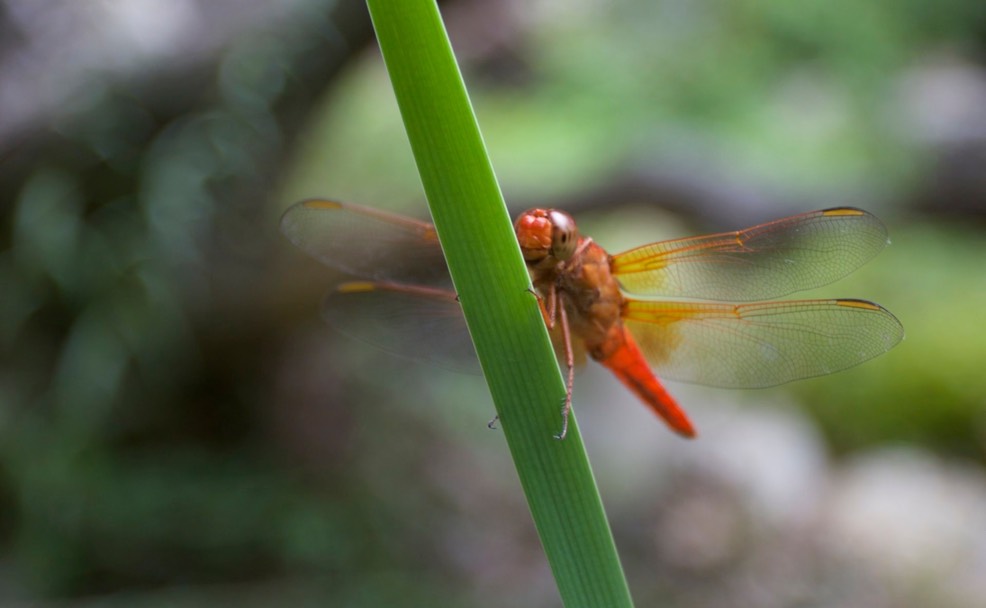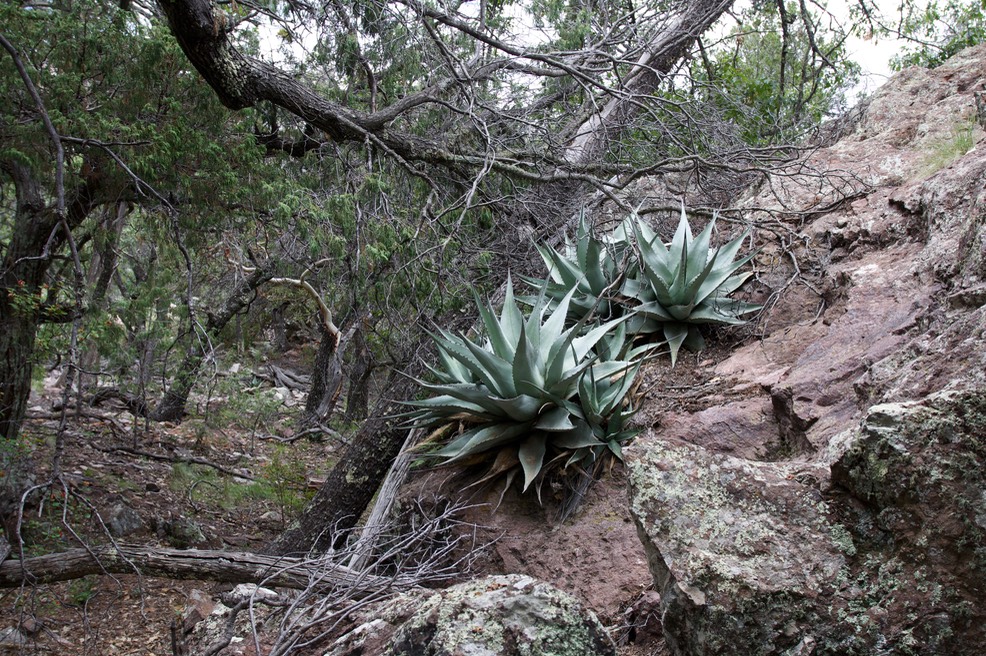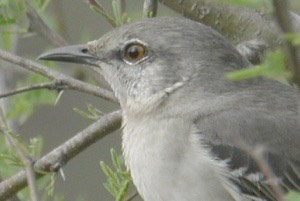I have spent some time in Texas over the years, mostly in the area around Big Bend National Park, along the Rio Grande, and at High Island near Houston. The Birds of Texas photo gallery has photographs of bird taken in Texas. The Texas Travel photo gallery contains photos of general interest. The Texas Flora photo gallery and the Other Natural History photo gallery round out the photos from Texas. For photographs of the sites of Ancient Peoples, please visit this link.
I have made several road videos in Texas: including State Highway 170 Along The Rio Grande; and several recordings from Big Bend National Park; Glenn Springs Road, Ernst Tinaja, Chisos Basin Road, Panther Junction to Study Butte, and the Road to Hot Springs. The road video, River Road - East which was also recorded in Big Bend National Park is presented below. These videos may also be viewed in the Roads of the Western United States video portfolio.
My notes about a walk to Cattail Fals on September 16, 2014 read: We have just returned from a five-day trip to Big Bend National Park in Texas, USA. Two days were spent driving to and fro. On Monday night we stayed in Alpine, north of the park and drove down to the park Tuesday Morning. The prairie was flush with grass and green shrubs following recent rains. A beautiful, but uneventful, drive. Along the way we saw Mule Deer, a small group of Javelina, and two small herds of Pronghorn (9 and 5 members respectively).
Once in the park we headed to Cattail Falls. This is not a well publicized site in the park but may be one of the prettiest. Traveling south on the Ross Maxwell Scenic Drive turn east on a dirt road and travel about two miles to a parking area near where the road is blocked by a locked gate. From the parking area follow the road until you drop down into a treed wash. The trail to the falls is obvious, on your right at this point. The walk to the falls, from the parking area, is 1.8 miles each way. There is no shade along the trail so it can be quite hot, this is desert walking. Elevation gain is minimal (3,748’ to 4,119’).

Maidenhair Fern and Spider at Cattail Falls, Big Bend National Park
You might think it strange to post photographs of maidenhair fern when writing about a desert park in the United States, but that is what Cattail Falls is about. After walking 1.8 miles through desert landscape you enter a small box canyon with a waterfall, pools of water, and green leafy plants. This is the type of contrast that I like about the desert. In the Pacific Northwest of the United States a spot like Cattail Falls would be beautiful but not uncommon, in the desert it is simply striking, a small jewel. And small it is, the “green area” of the falls is only 30-40 feet wide and a 150 feet long, after that, the stream of water goes to ground and - at this time - the rest is dry wash.
In the area by the falls there was maidenhair fern, reeds, various tree species, Lobelia cardinalis (Cardinal Flower), columbine, a mosaic of green - less than a hundred yards away it was a mosaic of brown.
Cattail Falls Big Bend National Park Texas
Our visit to Cattail Falls led me to make the following note: Last week, when we were at Cattail Falls in Big Bend National Park (Texas, USA), we found the Neon Skimmer, Libellula croceipennis, pictured below. A few weeks ago (September 6, 2014) I saw a Common Green Darner, Anax junius, at Hunt's Windmill in Phillip's Hole (Potrillo Volcanic Field, West of Las Cruces, New Mexico, USA). These two sightings provide some insight into water and the Western United States. Wherever there is water there is a different ecosystem, the size and diversity of that ecosystem is a function of the amount of water. Regardless, of the amount of water, however, you can be sure that you will see different flora and fauna at water sources in the west - and the differences that a few feet make in such situations can be substantial.

Libellula croceipennis, Neon Skimmer, Cattail Falls, Big Bend National Park
This Neon Skimmer was perching on reed stems below Cattail Falls when we found it, returning to its perch time and time again. This species is usually found near clear flowing water.
My notes for the following day (9/17/14) read: We took a walk from the Chisos Basin to Boot Canyon. The Chisos Basin is about 5,300’ in elevation and is the location of a campground, lodge, restaurant, store, and National Park Service Visitor’s Center. It is pavement in paradise, but does provide a good starting point for a walk into Boot Canyon, a locale famous in birding circles for the breeding population of Colima Warbler which is present during the summer. The walk is 9.8 miles, roundtrip, with a net elevation gain of about 1,800’ feet (5,306’ to 7,166’). The walk starts at the store in the Basin, proceeds up the Pinnacles Trail, down the Boot Canyon Trail (photograph of Agave along the trail below), then to the Colima Trail, and back via the Laguna Meadows Trail. The elevation profile of the walk is shown above. There is apparently a spring in Boot Canyon but I was unable to find it - be sure to carry sufficient water.


Agave havardiana, Century Plant, Chisos Mountains, Big Bend National Park
Along the way I saw minimal wildlife, with just a Whitetail Deer representing the larger fauna. The subspecies found in the Chisos Mountains is the Carmen Mountain Whitetail, Odocoileus virginianus carminis. Male Tarantulas (Texas Brown Tarantula, Aphonopelma hentzi) - video below - were in good form, a number were on the trail looking for females (some point in the future I will post video of a male Tarantula approaching a hole which apparently has a disinterested female -- which is a good news, bad news, scenario. A female can be disinterested and do nothing, she may mate, or she may kill and eat the male.)
Mexican Jays were common, and loud, along the trail. I also saw Black-crested Titmouse, Canyon Towhee, Bushtit, Cactus Wren, Bewick’s Wren, Summer Tanager, and Blue-gray Gnatcatcher as I ambled along. There were also many Western Horse Lubber Grasshoppers, Taeniopoda eques, beside the trail - photo below.
Taeniopoda eques, Western Horse Lubber, Chisos Mountains, Big Bend National Park
Perhaps most amazing of all is the fact that we only saw two other people on the trail. Spending a day on the trail and seeing so few people is reminiscent of my home patch of the Black Range in New Mexico. It was quite unexpected in a National Park.
On Thursday, we spent some time birding but we were out in the heat of the day so it was unproductive. I did manage some video of a Verdin at its nest and a short segment of Vermillion Flycatcher. Vermillion Flycatchers were very common, especially along the river. Northern Cardinals, Turkey Vultures, Yellow-headed Blackbirds, Bullock’s Oriole, and Summer Tanagers rounded out the rather meager list for the day.
We all know that there are good things about stereotypes, stereotypes are the way our minds categorize items for quick processing. Sometimes you run into someone who is so consumed by pc-ism that they argue that stereotypes are bad, that everything should be judged by its own attributes. That is hogwash of course, to do so would mean that everything would grind to a halt in analysis.

But the good things aside, there is a significant downside to stereotypes. When stereotypes blind us to certain realities, to information, to critical assessment they become the greatest tool of evil and the single most important element in limiting the potential of our species.
While editing material from Texas, something I had been avoiding somewhat because I have such a bad image of Texas. Texas, the homeland of the bushites, trumpites, gated communities, and soiled bed linen. On the other hand it is a place you can find wonderful birds, from the typical Northern Mockingbird, to the more colorful Roseate Spoonbill, to the spectacular Green Jay. But stereotypes are hard to deal with, even when you are cognizant of the downsides.
The Plain Chachalaca is a bird many Americans travel to Texas to see. The photograph to the right reminds me of two things: 1) what a bear it is to spell Chachalaca; and 2) how ubiquitous this genus (Ortalis) is in the America’s, although hardly known in the United States.
I have encountered Chachalaca in most parts of the Americas south of the US, species have ranged from Chaco to Speckled with a little Grey-headed and Plain thrown in for differentiation - and there does not seem to be a lot of differentiation to the untrained eye. The twelve or so species in this genus flock together and are relatively easy to see if you are in the right place.
Chachalaca’s are loud in the morning, their morning chorus lets you know it is time to rise, in no uncertain terms.